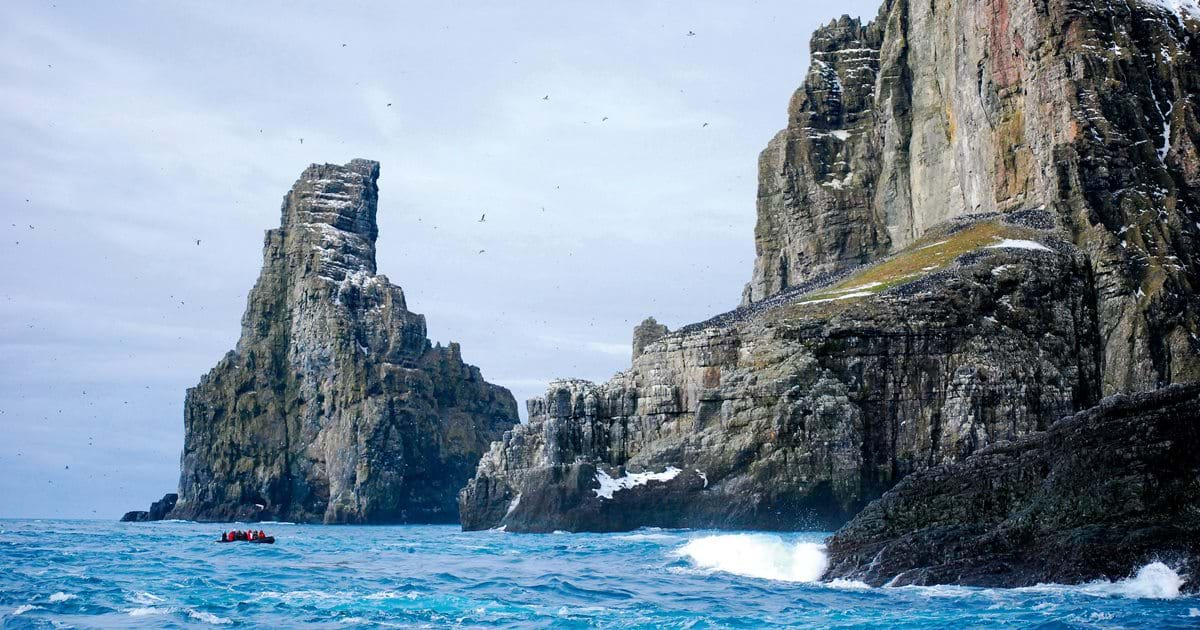Rare Natural Phenomena Over Bear Island

A remarkable satellite image captured on July 13, 2023, reveals a rare intersection of natural phenomena occurring around Bear Island, also known as Bjørnøya. This remote island is part of Norway’s Svalbard archipelago and is surrounded by the Barents Sea. The image showcases swirling atmospheric patterns alongside a massive algal bloom, creating a stunning visual representation of nature’s complexity. However, the region also faces ecological concerns due to radioactive waters linked to a Cold War-era Soviet submarine. This article explores the unique atmospheric and oceanic processes observed in the satellite image and the potential impact of radioactivity on local wildlife.
Von Kármán Vortices Above Bear Island
The satellite image highlights a fascinating cloud formation known as von Kármán vortices. According to NASA’s Earth Observatory, these swirling patterns occur when airflow is disrupted by a tall landmass. In this case, Miseryfjellet, Bear Island’s highest mountain, serves as the source of this disturbance. Miseryfjellet boasts three peaks, named Urd, Verdande, and Skuld, after the Norns of Norse mythology. Collectively, these peaks reach an impressive height of 536 meters above sea level.
As clouds pass over Miseryfjellet, they create a braided design in the sky, trailing behind the mountain. This phenomenon is not only visually striking but also a testament to the dynamic interactions between land and atmosphere. The vortices can extend for miles, showcasing the power of natural forces at play. Such formations are often studied by meteorologists and climatologists to understand airflow patterns and their implications for weather systems. The presence of these vortices above Bear Island adds to the island’s allure, drawing attention to its unique geographical features and the natural beauty of the surrounding environment.
Gigantic Algal Bloom in the Barents Sea
In addition to the atmospheric patterns, the satellite image reveals a massive algal bloom in the Barents Sea. This bloom spans approximately 400 kilometers across the ocean surface, creating a striking light-green formation. The vibrant color is attributed to chlorophyll produced by photosynthetic algae, commonly known as phytoplankton. These organisms thrive in sunlight-rich conditions, making the Barents Sea an ideal environment for their growth.
The spiral shapes observed in the algal bloom are influenced by ocean currents, which shape the distribution and appearance of the algae. Such blooms are a natural occurrence in marine ecosystems, often providing a crucial food source for various marine species. However, they can also indicate changes in water quality and nutrient levels, which may have broader ecological implications. The presence of a large algal bloom near Bear Island highlights the dynamic nature of the ocean and its ability to support diverse life forms. It also serves as a reminder of the interconnectedness of atmospheric and oceanic processes in shaping the environment.
Impact of Radioactivity on Local Wildlife
While the satellite image showcases the beauty of Bear Island’s natural phenomena, it also raises serious ecological concerns. The waters surrounding the island are known to be radioactive, primarily due to the remnants of the Soviet submarine K-278 Komsomolets, which sank in 1989. This submarine lies approximately 185 kilometers southwest of Bear Island and has contributed to elevated radiation levels in the area. Reports indicate that radiation levels were measured at 800,000 times higher than normal in 2019.
The potential risks posed by this radioactivity to the local ecosystem are alarming. Bear Island is home to various wildlife, including large populations of seabirds, foxes, and seals. However, polar bears are rarely sighted in the region. The presence of radioactive materials raises questions about the health and safety of these animals, as well as the overall stability of the ecosystem. As scientists continue to monitor the situation, the co-occurrence of atmospheric and oceanic phenomena in the satellite image serves as a stark reminder of the complex and often fragile balance of nature. The beauty of Bear Island is intertwined with the challenges it faces, highlighting the need for ongoing research and conservation efforts in this unique environment.
Observer Voice is the one stop site for National, International news, Sports, Editor’s Choice, Art/culture contents, Quotes and much more. We also cover historical contents. Historical contents includes World History, Indian History, and what happened today. The website also covers Entertainment across the India and World.

